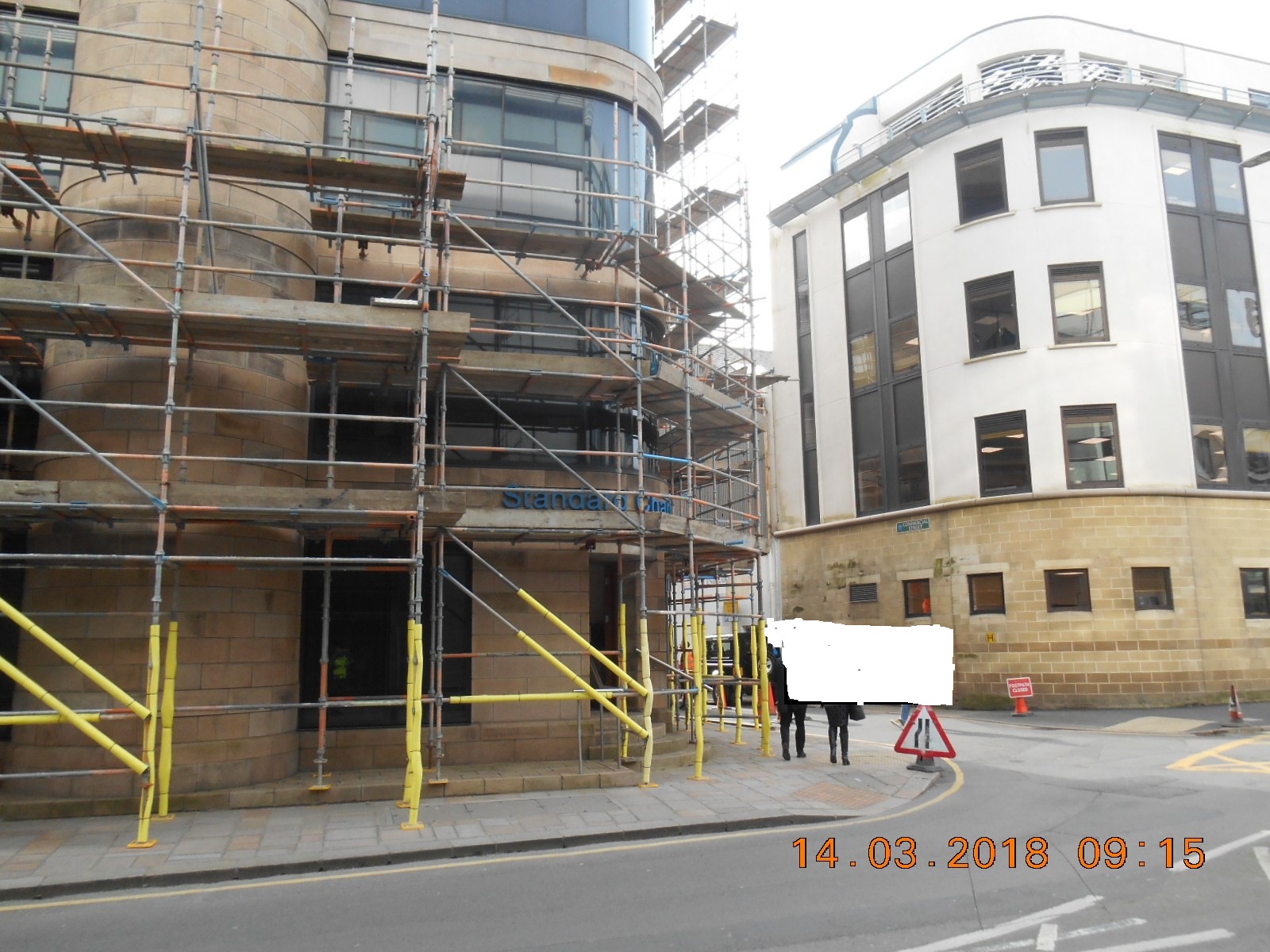15 April 2019
K-Lok Scaffolding Ltd (K-Lok) was fined £30,000 plus £3,000 costs by the Royal Court on 22 March 2019. This case arose after scaffolding materials were dropped by scaffolders erecting a scaffold to the property known as 13-15 Castle Street, St Helier on 2 consecutive days in March 2018. Fortunately, nobody was injured as a result, but the consequences could have been extremely serious and potentially fatal as, on each occasion, the components landed on a busy pavement.

13-15 Castle Street
On Tuesday 13 March 2018 a scaffolder inadvertently dropped a ‘one board support’ (a short length of scaffold tube, approximately 290mm long and weighing 1.5Kg) whilst working on the 3rd lift (working platform) of the scaffold erected to Castle Street. The one-board support fell onto the pavement below, a distance of approximately 6.5 metres, narrowly missing a pedestrian.
Following notification of the incident a Health and Safety Inspector attended site and discussed safe systems of work, including closure of the pavement below the scaffold, creating an exclusion zone and working during quieter periods outside of peak hours when there was less pedestrian traffic.
On Wednesday 14 March 2018, the HSI was notified of another incident of materials falling onto the pavement during the erection of scaffold. A member of the public reported that they had narrowly missed being hit by a ratchet spanner which had fallen from the scaffolding as they turned the corner from Commercial Street onto Castle Street. Although the scaffolding supervisor initially denied any knowledge of this incident, he subsequently admitted that his ratchet had fallen from his belt whilst working on the 3rd lift and landed on the pavement below.
Comments
The risk of falling materials during the erection and dismantling of scaffolding is well recognised. Carrying out such work in a busy pedestrianised area therefore requires a particularly high level of planning and robust control measures put in place to minimise the risk of, and mitigate the consequences of, any scaffold components or other materials falling.
The investigation into the incidents identified that K-Lok had failed to properly assess and control the risks to pedestrians during the erection of scaffolding to Castle Street. The company had also failed to provide employees with clear instructions on how to erect the scaffold safely, in accordance with industry best practice and minimising the risks to members of the public.
Whilst a risk assessment and method statement had been prepared, it was generic, incomplete and not specific to this project. It failed to specify the safe systems of work and control measures which needed to be adopted taking into account the particular hazards associated with the site, ie a large and relatively complex scaffold structure being erected on a very busy pedestrian thoroughfare bordering busy roads.
Even after the first incident had occurred and advice provided by the Inspector, no effective review of the control measures was carried out and/or effective steps taken to prevent the risk of people being injured from a similar incident.
Although an attempt had been made to create a temporary exclusion zone using tape and cones on 14 March, this proved ineffective and the use of such measures would not be considered to provide sufficiently robust physical measures to exclude pedestrians from accessing dangerous areas.
Protection of the public
Authoritative guidance on determining the most appropriate means of protecting persons from falling objects during scaffolding work is published by the National Association of Scaffolding Contractors (NASC) ‘SG34:17 Guidance on Protection of the Public’. A copy of this guidance can be downloaded free of charge from the NASC website
In addition, the Parish of St Helier publishes a guide to the requirements for assembling scaffolding on highways in St Helier’, which reflects similar requirements.
In this instance, the Court highlighted that reasonably practicable measures which should have been taken included:
- the erection of the first 3 lifts and the protection fan to Castle Street outside of busy periods and not at the height of the day
- the closure of the Castle Street pavement to the public using hard, physical barriers which directed the flow of pedestrian traffic either under the completed pavement scaffold lift or to the opposite pavement
A copy of the full Court Judgement, [2019]JRC044, is available on the Jersey Legal Information Board website